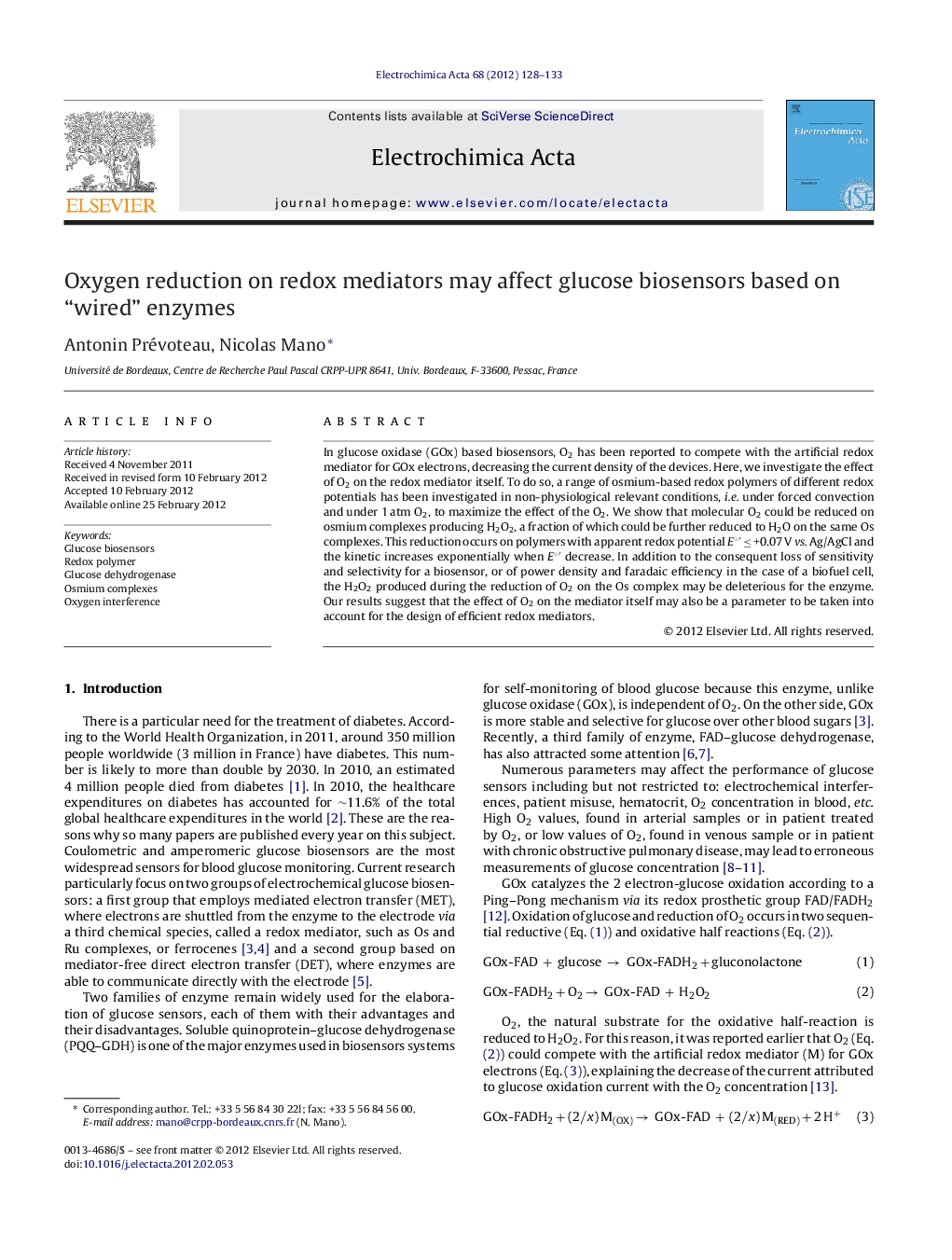| Article ID | Journal | Published Year | Pages | File Type |
|---|---|---|---|---|
| 188693 | Electrochimica Acta | 2012 | 6 Pages |
In glucose oxidase (GOx) based biosensors, O2 has been reported to compete with the artificial redox mediator for GOx electrons, decreasing the current density of the devices. Here, we investigate the effect of O2 on the redox mediator itself. To do so, a range of osmium-based redox polymers of different redox potentials has been investigated in non-physiological relevant conditions, i.e. under forced convection and under 1 atm O2, to maximize the effect of the O2. We show that molecular O2 could be reduced on osmium complexes producing H2O2, a fraction of which could be further reduced to H2O on the same Os complexes. This reduction occurs on polymers with apparent redox potential E°′ ≤ +0.07 V vs. Ag/AgCl and the kinetic increases exponentially when E°′ decrease. In addition to the consequent loss of sensitivity and selectivity for a biosensor, or of power density and faradaic efficiency in the case of a biofuel cell, the H2O2 produced during the reduction of O2 on the Os complex may be deleterious for the enzyme. Our results suggest that the effect of O2 on the mediator itself may also be a parameter to be taken into account for the design of efficient redox mediators.
► We investigate the O2 reduction on a range of Os complexes of different redox potentials. ► Experiments are performed under forced convection to maximize the O2 effect. ► We prove that O2 is reduced to H2O2 on Os complexes of E°′ ≤ +0.07 V vs. AgAgCl. ► H2O2 can be further reduced to H2O on Os complexes but with slower kinetics. ► The O2 reduction may affects the performances of biosensors based on wired enzyme.
